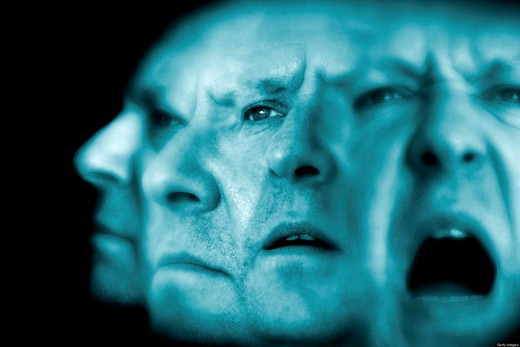The Symptoms of Schizophrenia

The symptoms of schizophrenia
The symptoms of schizophrenia involve disturbances in several major areas, including thought, perception, attention, motor behavior, affect, and life functioning.
Symptoms are typically characterized as positive, negative, or disorganized. Positive symptoms include excesses and distortions such as delusions and hallucinations. Negative symptoms refer to behavioral ...deficits, such as flat affect, avolition, alogia, and anhedonia. Disorganized symptoms include disorganized speech and bizarre behavior. Other symptoms are catatonia and inappropriate affect.

DSM-IV-TR includes several subtypes of schizophrenia
DSM-IV-TR includes several subtypes of schizophrenia, including disorganized, catatonic, and paranoid. These subtypes are based on the prominence of particular symptoms (e.g. delusions in the paranoid subtype) and reflect the variations in behavior found among people diagnosed with schizophrenia. However, there is considerable overlap among the subtypes, and they have little predictive validity. The data on the genetic transmission of schizophrenia are impressive. Most importantly, adoption studies show a strong relationship between having a schizophrenic parent and the likelihood of developing the disorder, typically in early adulthood.

Predisposition to develop schizophrenia may have biochemical correlates
The genetic predisposition to develop schizophrenia may have biochemical correlates. It appears that an increased sensitivity of dopamine receptors in the limbic area of the brain is related to the positive symptoms of schizophrenia. The negative symptoms may be due to dopamine underactivity in the prefrontal cortex. Other neurotransmitters, such as serotonin, may also be involved. The brains of patients with schizophrenia, especially those with negative symptoms, present enlarged ventricles and prefrontal atrophies as well as reduced metabolism and structural abnormalities in the frontal and limbic areas. Some of these structural abnormalities could result from viral infections contracted during the second trimester of pregnancy or from damage sustained during a difficult birth.

Important determinants of relapse
Because of the downward social mobility created by the disorder, the diagnosis of schizophrenia is most frequently applied to members of the lowest social class. In addition, vague communications and conflicts are evident in the family life of patients with schizophrenia and probably contribute to their disorder. High levels of expressed emotion in families and increases in general life stress have been shown to be important determinants of relapse.
Antipsychotic drugs, especially the phenothiazines, have been widely used to treat schizophrenia since the 1950s. Newer medications, such as clozapine and risperidone, are also effective and produce fewer side effects. Drugs alone are not a completely effective treatment because patients with schizophrenia need to be taught or retaught ways of dealing with the challenges of everyday life. Furthermore, most antipsychotic drugs have serious side effects, such as tardive dyskinesia, especially after long-term use, and many patients with schizophrenia do not benefit from them.

Efficacy of analytic treatments
Psychoanalytic theory assumes that schizophrenia represents a retreat from the pain of childhood rejection and mistreatment, and the analyst attempts to offer the patient a safe haven in which to explore repressed traumas. However, the efficacy of analytic treatments has not been supported by evidence. In contrast, family therapy aimed at reducing high levels of expressed emotion has been shown to be valuable in preventing relapse. In addition, social skills training and various cognitive-behavioral therapies have helped patients to meet the inevitable stresses of family and community living or to lead more ordered and constructive lives within an institution. Recent efforts to change the thinking of people with schizophrenia are showing promise as well.
The most promising approaches today emphasize the importance of both pharmacological and psychological interventions. Unfortunately, such integrated treatments are not widely available.
© 2014 Augustine A. Zavala



